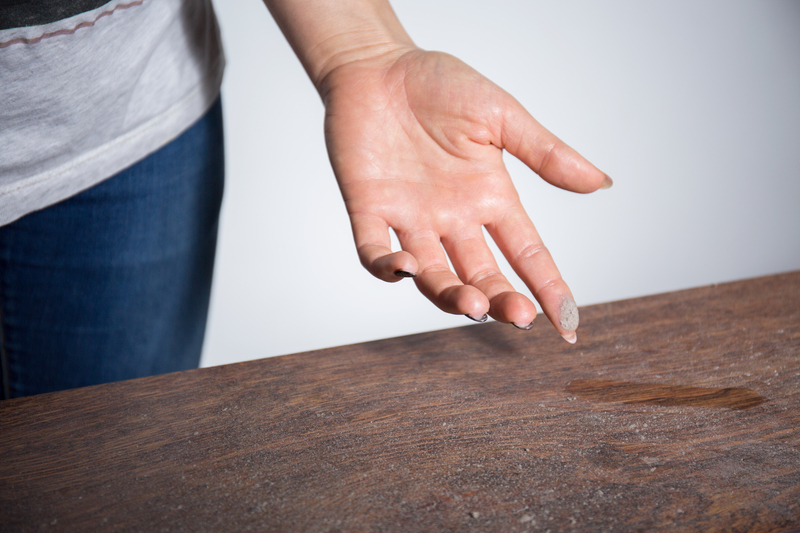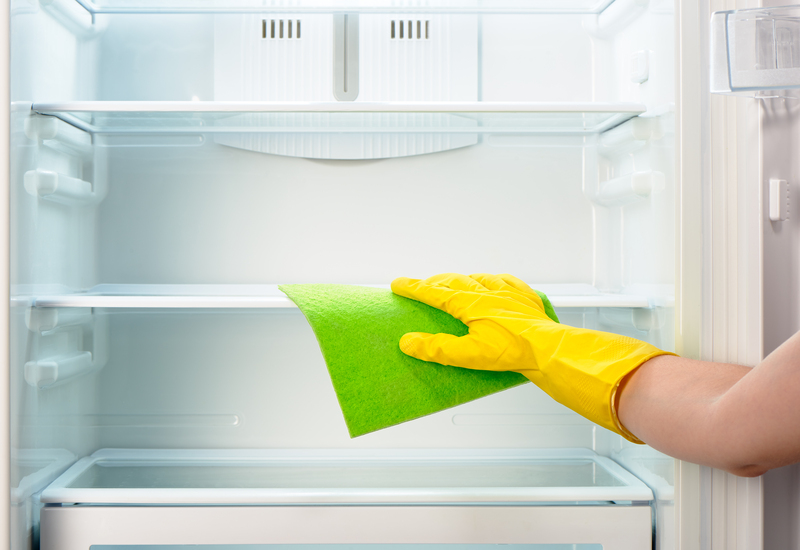Live Comfortably: Achieving a Dust-Free, Allergy-Friendly Space
Posted on 19/08/2025
Live Comfortably: Achieving a Dust-Free, Allergy-Friendly Space
Are you tired of sneezing, itchy eyes, or constant dust settling on your furniture? If so, you're not alone. Millions of people worldwide struggle with allergies, and often, home environments are a major source of discomfort. Whether you suffer from respiratory ailments or simply wish to breathe easier and live in a cleaner environment, creating an allergy-friendly, dust-free space is essential for comfort and wellbeing.
Understanding Allergens: What Causes Dust and Allergic Reactions?
To design a comfortable, dust-free home and allergy-friendly zone, it's crucial to understand what dust consists of and why it aggravates allergies. Household dust is a complex mixture that may include:
- Dead skin cells
- Pet dander
- User fibers
- Soil particles
- Mold spores
- Dust mite feces and body fragments
Dust mites and mold spores are notorious triggers for allergies. Even if you don't see them, their microscopic presence can lead to a range of symptoms, such as:
- Congestion and sneezing
- Itchy, watery eyes
- Asthma attacks
- Persistent cough
Eliminating these irritants is vital for comfortable, everyday living, especially for those most prone to allergies including children, seniors, and those with chronic respiratory diseases.

Essential Steps to Create a Dust-Free, Allergy-Friendly Home
Cultivating an environment that minimizes dust and allergic reactions doesn't need to be overwhelming. By implementing targeted strategies, you can transform your living spaces into sanctuaries of comfort and well-being.
1. Improve Indoor Air Quality
The foundation of an allergy-friendly space lies in its air quality. Clean air means fewer allergens and less dust. Here's how to achieve it:
- Use High-Efficiency Particulate Air (HEPA) Filters: Upgrade your HVAC system or buy an air purifier with a true HEPA filter. These filters capture up to 99.97% of particles, including pollen, dust mites, and pet dander.
- Ventilation Is Key: Open windows regularly, weather permitting, to allow fresh air in and expel dust-laden indoor air. Use exhaust fans in bathrooms and kitchens.
- Monitor Humidity: Maintain relative humidity between 30% and 50%. Dust mites and mold thrive in moist environments, so using a dehumidifier can reduce their proliferation.
- Keep Air Ducts Clean: Schedule regular professional cleaning of ducts to prevent accumulation of dust and distribute allergen-free air.
2. Choose the Right Flooring
Flooring materials play a significant role in how much dust accumulates and how easily it can be cleaned. Here are your best options for an allergy-safe space:
- Hardwood, laminate, or tile: These surfaces don't trap dust mites or allergens, making them easier to keep clean. Sweep and mop regularly for optimal results.
- Carpet Concerns: If you prefer carpeting, choose low-pile varieties and vacuum frequently with a vacuum featuring a HEPA filter. Otherwise, consider area rugs that can be washed or replaced more easily.
3. Minimize Clutter for a Dust-Free Home
Clutter collects dust. Books, trinkets, and unused items become dust magnets. For a cleaner environment:
- Regularly declutter rooms and only display essential items.
- Store items in closed cabinets rather than open shelves.
- Use plastic or glass containers for storage, instead of cardboard or fabric.
4. Establish a Smart, Allergy-Safe Cleaning Routine
Keeping up with cleaning is the most effective way to maintain a dust-control, allergy-friendly living space.
- Use Damp Dusting Techniques: Instead of dry dusting, which stirs particles into the air, use a damp microfiber cloth.
- Vacuum Often: Vacuum floors, carpets, and upholstery two to three times a week with a HEPA-equipped vacuum.
- Launder Bedding Weekly: Dust mites thrive in bedding. Wash sheets, pillowcases, and blankets in hot water (at least 130?F/54?C) every week.
- Wash Curtains and Clean Blinds: Use washable curtains, and regularly wipe down blinds to eliminate dust buildup.
5. Control Pet Dander
If you have pets but want an allergy-friendly environment, discipline is key.
- Designate Pet-Free Zones: Especially keep pets out of bedrooms and off soft furniture.
- Bathe and Groom Regularly: Brush and wash pets to reduce dander and shed fur.
- Clean Pet Beddings and Toys: Wash these frequently to prevent allergen accumulation.
6. Reduce Mold and Mildew Risks
Mold spores are a top allergy trigger. To maintain a mold-free home:
- Address Leaks Immediately: Repair plumbing or roof leaks promptly.
- Use Mold-Resistant Materials: Especially in bathrooms, kitchens, and basements.
- Ventilate Damp Areas: Use exhaust fans or open windows after showers or cooking.
- Clean With Antimicrobial Solutions: Regularly clean bathroom tiles and grouts.
Smart Solutions: Products for an Allergy-Friendly, Dustless Home
Choosing the right allergy-control products can supercharge your efforts. Innovations and modern appliances make it easier than ever to live dust-free:
- Allergen-Barrier Bedding: Hypoallergenic mattress and pillow encasements prevent dust mites from taking hold.
- Wearable Air Purifiers: Ideal for sensitive individuals, these devices clean the air in your immediate breathing zone.
- Eco-Friendly Cleaning Products: Use non-toxic cleaners to prevent chemical irritation. Seek out solutions with antimicrobial and dust-repellent properties.
- Smart Home Devices: Air quality monitors can alert you to increases in allergens so you can act quickly.
Room-by-Room Guide to a Dust-Free, Allergy-Friendly Space
Every room presents unique challenges for keeping dust and allergens at bay. Here's how to optimize each area of your home:
Bedroom
- Encase pillows and mattresses in allergen-proof covers.
- Launder bedding in hot water weekly.
- Remove heavy drapes and opt for washable window coverings.
- Keep nightstands and floors uncluttered.
- Use a HEPA air purifier, especially during pollen season.
Living Room
- Replace upholstered furniture with leather or vinyl, which don't trap allergens.
- Frequent vacuuming and dusting of coffee tables, media consoles, and electronics (which can attract dust!)
- Minimize throw pillows and opt for machine-washable covers.
- Keep windows closed during high pollen days.
Kitchen
- Keep food in sealed containers to avoid attracting pests and mold.
- Wipe counters, shelves, and cupboards frequently.
- Regularly clear out the refrigerator and dispose of expired food promptly.
- Vent cooking areas to reduce humidity and fumes that can exacerbate allergies.
Bathrooms
- Run ventilators or leave the window open when showering.
- Use mold-resistant shower curtains and clean tile grout regularly.
- Keep toiletries in closed cabinets to minimize dust settling.
- Dry all wet surfaces promptly to inhibit mold growth.
Children's Rooms
- Choose washable stuffed toys and clean them weekly.
- Organize toys and supplies in closed bins or containers.
- Opt for blinds rather than fabric curtains.
- Vacuum and dust more frequently, as children tend to stir up dust.
Maintenance Tips for Long-Term Comfort
Sustaining a dustless, allergy-free environment is more about establishing good habits than one-time efforts. Here's how you can keep your home healthy and comfortable all year round:
- Replace HVAC and air purifier filters as recommended.
- Schedule regular deep cleanings of carpets, upholstery, and curtains.
- Avoid indoor smoking and limit candle or incense use, as smoke particles exacerbate allergies.
- Monitor seasonal changes and adjust cleaning routines -- for example, during pollen season or after heavy rains.

The Psychological and Physical Benefits of a Dust-Free Space
A clean, allergen-free home isn't just about reducing symptoms -- it's about improving your quality of life. When you take control over your home environment, you enjoy:
- Better sleep quality
- Fewer sick days and reduced medication use
- Improved concentration and productivity
- Enhanced comfort for family and guests
- A safer, more relaxing home environment
Conclusion: Transform Your Home into a True Comfort Zone
Living comfortably is within reach when you commit to a dust-free, allergy-friendly lifestyle! By understanding the sources of dust and allergens and actively reducing their presence through smart cleaning routines, proper ventilation, and allergy-blocking products, you can create an environment where everyone can breathe easy and enjoy daily life.
Prioritize your well-being, embrace these practical tips, and start enjoying a fresher, healthier home today!
Remember, a little effort goes a long way toward a lifetime of comfort.




